Yangon's street scene has changed dramatically in the last two years. The government launched a new car substitution scheme in 2011 (only a few thousand cars per year used to be allowed for the population of 48 mil until then), introducing additional 100,000 cars onto existing roads. Inevitably, streets are packed with crawling, honking, polluting vehicles and very new drivers. Still, smaller streets have maintained Yangon's way of life. A strange and beautiful mix of British colonial architecture and make-shift housing form the city grid. Within it, opportunities to participate in the city surface. Every street is lined with stores with their facades right open to receive customers. Restaurants and food stalls invite the famished to outdoor tables and chairs, with sweet smell of soups and herbs. Residential apartments, pre-schools and offices take up the upper floors providing views to the dynamic street scene below. Right in the city centre, a strong sense of community prevails, for now.
Some large new developments are taking place too. Traders Hotel is one of the few 4-5 star hotels and it takes up half a block. The building is a giant solid gated mass, with the obvious intention to block off the rest of the city. Soon enough, the little stores and stalls will be driven out, away from the new hotel developments. Following the break up of 50 years of military rule in 2011, Yangon's new political climate and foreign investments are changing the city, fast. Cars are moving fast, buildings are going up, people are moving out. Few places remain as public spaces. Amid all the noise and pollution, pagodas are still quiet, accessible and safe places for people to gather, walk (barefoot) and relax. They are essentially a shared outdoor living room set in nature. Several potential landmarks already exist in the city centre, including Minister's Building, where Aung San was assassinated in 1947. It is currently abandoned and fenced in but its significance is immense both architecturally and historically. The building site, along with other heritage buildings, presents opportunities to support history education and tourism.
Yangon is getting bigger, taller and more accessible. The Circle Line's expansion plan is waiting on a green light from foreign investors. Cranes work day and night. Cars are in use day and night. In the chaotic streets though, there are always stools to sit on and betel nuts and coconuts to be eaten with friends.
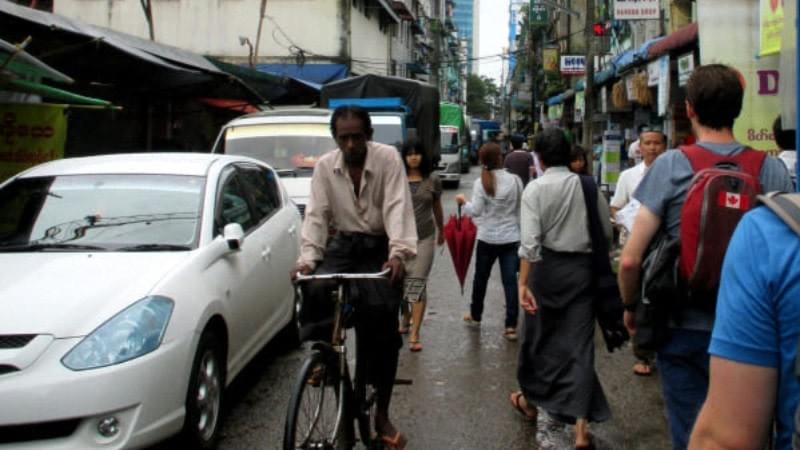
The narrow North-South street width reduces the number and speed of cars.
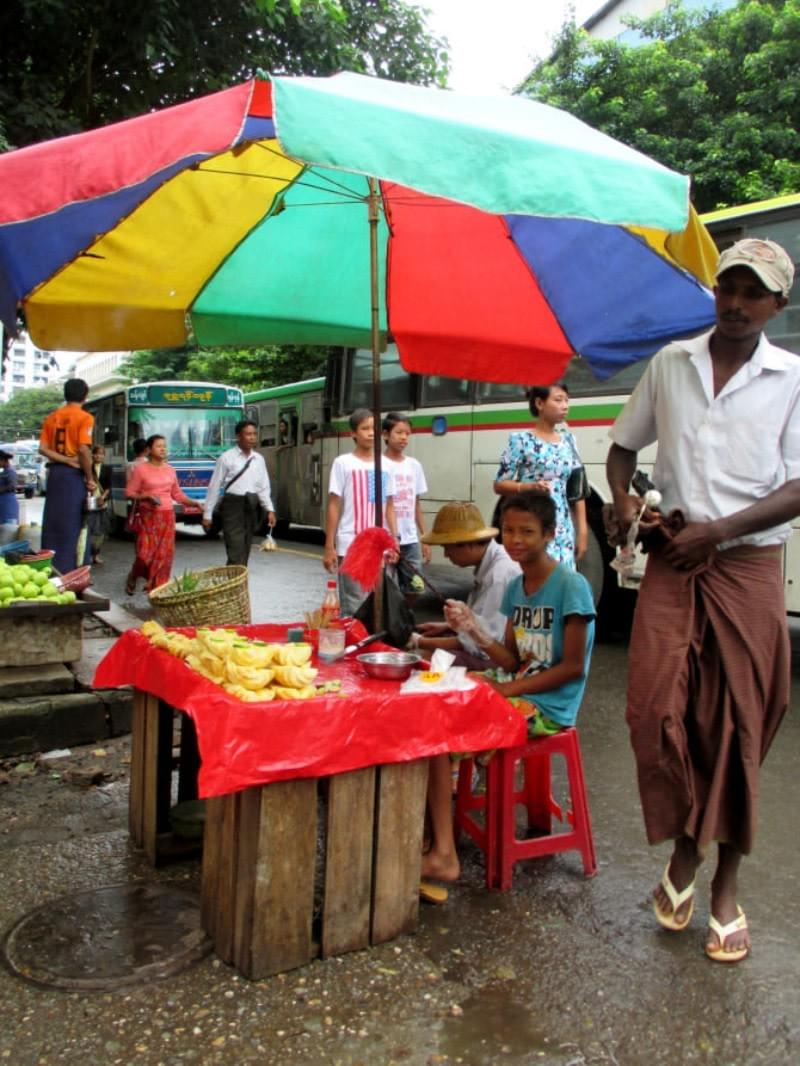
All kinds of food is available for purchase at every street corner.

Makeshift outdoor restaurants like this one is the most common option for eating out.
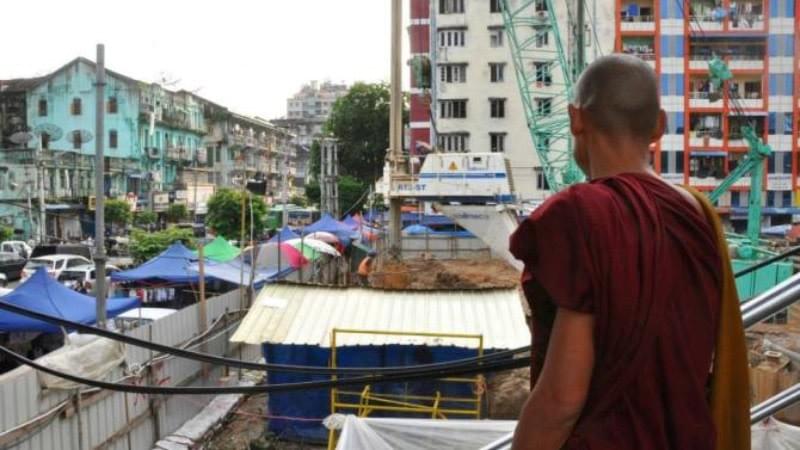
Preparing the ground for a new urban future.
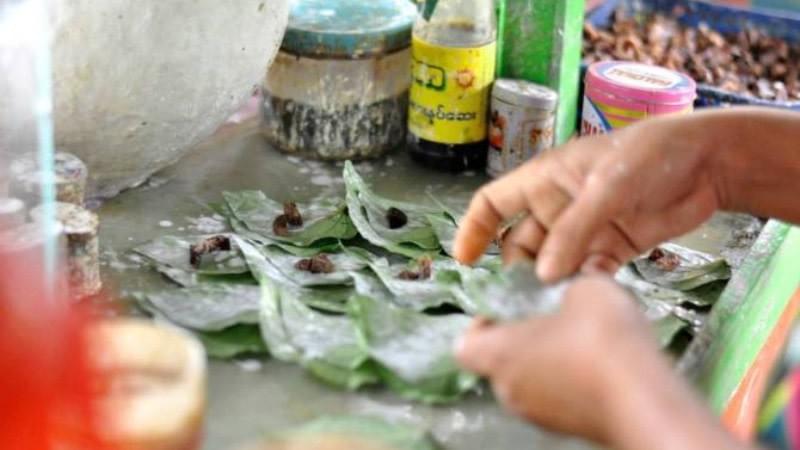
Stalls sell various food products made on the spot- this one is betel nut.
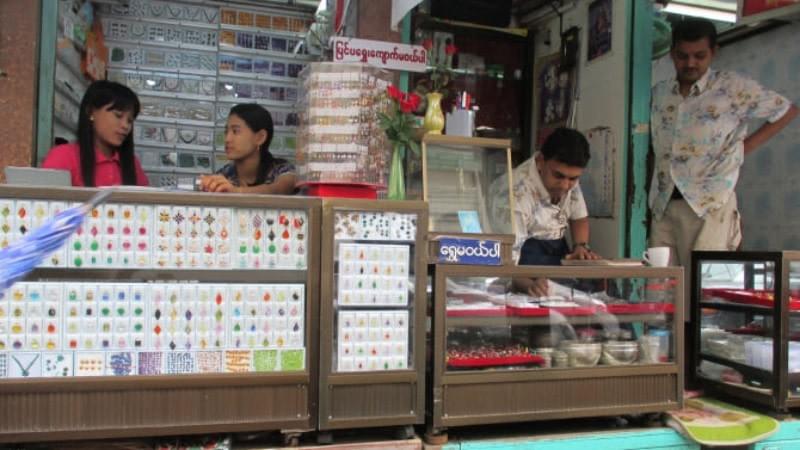
Stores on both sides of the street open right up to display their products.
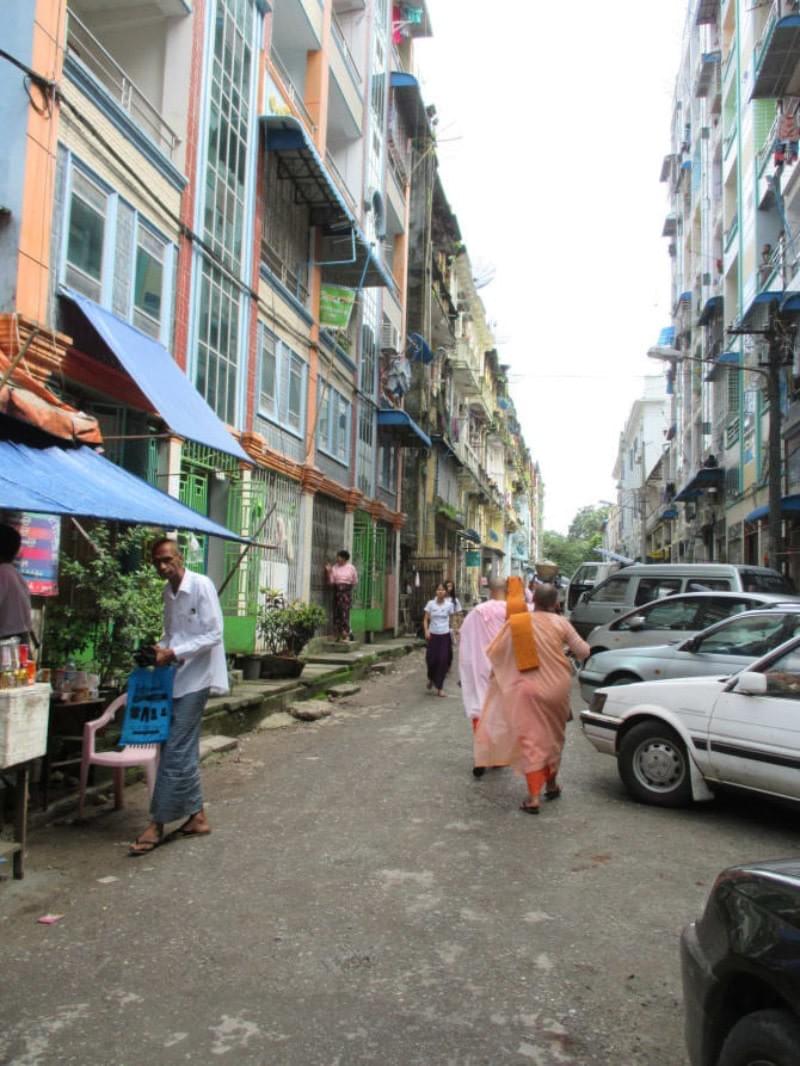
Existing buildings have not been maintained well but present a lot of potential with their interesting facades and pleasant height.
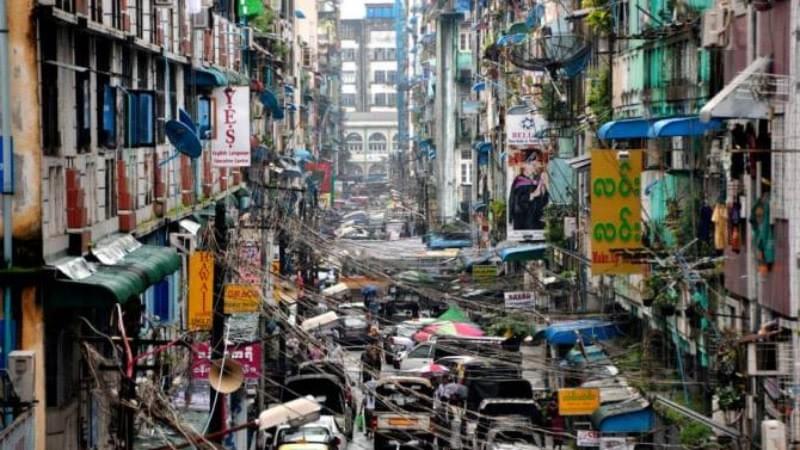
Organic, chaotic and dynamic streets of Yangon is human scale.
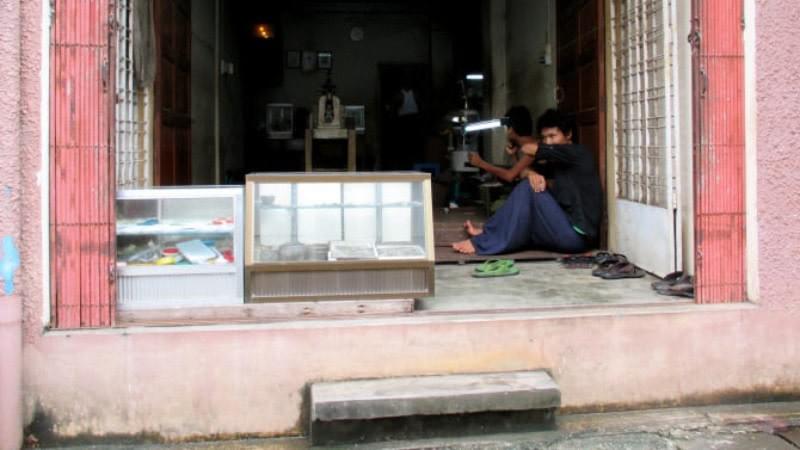
Some stores contain a living quarter at the back. Frequent flooding in the rainy season dictates the ground level.
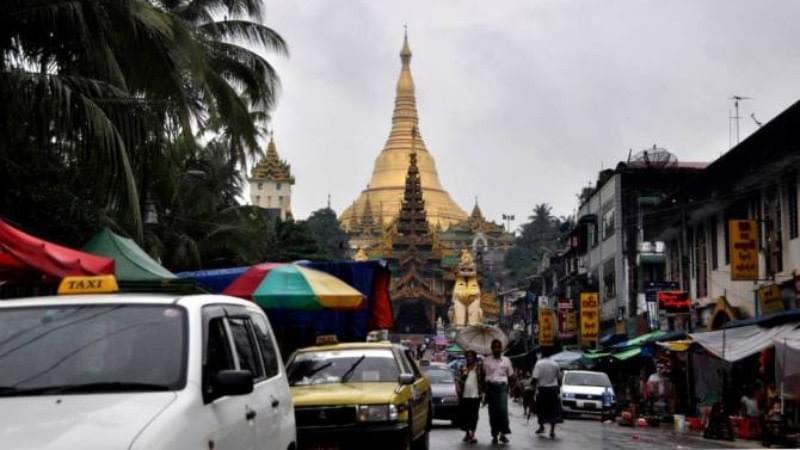
Cars, pedestrians, stalls all mix on the street.

Sule Road, the main road leading to Sule Pagoda, is one of the busiest streets with heavy vehicular traffic and few pedestrian crossings.